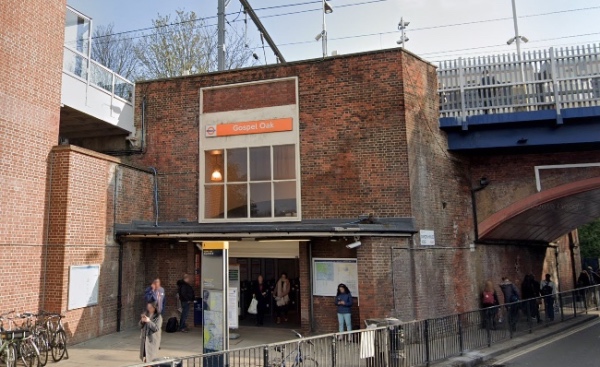Yes, the name of this inner north-west London district – which sits between Hampstead and Kentish Town – does originate with an oak.
Up until the early 19th century, the tree was apparently used as a marker between the parish boundaries of Hampstead and St Pancras. So that’s the oak part.
The gospel part comes from the use of the term to describe the medieval custom of ‘beating the bounds’ – an annual event in which residents would walk around their parish boundary and literally beat prominent boundary markers as a way of conveying to a then largely illiterate people where the borders were located. The oak, said to have stood on the corner of Southampton and Mansfield Roads, was one such marker.
As well as the beating part, the event would also involve the singing of hymns and, yes, the reading of sections of the gospels while standing under the oak. Hence Gospel Oak.
The oak was also apparently used as a site for open-air preaching at other times and it’s said that St Augustine, 14th century Bible translator John Wycliffe, John Wesley, the founder of Methodism, and fellow evangelist George Whitefield are among the many who preached under the oak (although many of these claims can be taken with a grain of salt).
The area was predominantly rural until the mid-1800s when local landowners Lord Mansfield, Lord Southampton and Lord Lismore began selling off the land for development. The houses built here were apparently at the more affordable end of the market, perhaps not surprising given the area became criss-crossed with railroad lines. Devastated by bombing during World War II, large parts of Gospel Oak were rebuilt in the mid-20th century.
The (now) London Overground station which bears the name Gospel Oak (pictured below) was opened in 1860, originally with the name Kentish Town (but quickly renamed Gospel Oak when Kentish Town was used elsewhere). Other landmarks include St Martin’s Church in Vicars Road (pictured above), which has been described as one of the “craziest” of London’s Victorian churches, and All Hallows Church in Shirlock Road.
One of the area’s more famous residents, Michael Palin, has lived in the area since the 1960s and reportedly planted a new oak in Lismore Circus in 1998 but the tree has apparently not survived.
PICTURES: Google Maps


